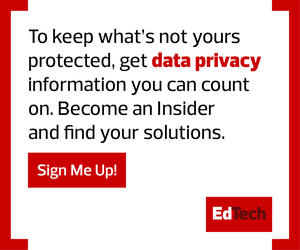Students Need More Than Just Devices for Learning
Many schools focused on getting laptops into students’ hands when the pandemic closed buildings. But soon, a more difficult problem arose: connectivity. Students and educators without reliable access to the internet found it difficult to engage in a meaningful learning experience.
Without access to the internet, the devices in students’ backpacks were no more useful than textbooks from the 1960s. A laptop doesn’t do anything without connectivity; without access to the internet, a student’s productivity, innovation and creativity are stifled.
RELATED: Felisa Ford brings 'Good Trouble' to the classroom with Minecraft: Education Edition.
This was a real reminder to K–12 districts that technology alone is never the answer. Technology is the vehicle. Before the pandemic, it was a vehicle for delivering content; now, technology functions as a way to receive students’ responses and nurture their creativity. Teachers can and should incorporate technology into the pedagogy and lesson plans they already have, but this only works when everyone can access these materials.
Disconnected Students Lose the Opportunity to Learn
The lost opportunity for learning was exacerbated by the digital inequities in many districts. In many instances, students who had all the tools they needed, from devices and peripherals to internet access, didn’t suffer learning loss. In fact, in districts where educators and students were well equipped and connected, there was more learning, not less. Everyone worked to innovate and problem-solve.
Unfortunately, students who didn’t have devices — or didn’t have devices they could use in a meaningful way — didn’t have the same opportunities to be innovative and creative. This doesn’t mean learning stopped; some school districts sent home printed packets of work for students to complete.
However, without access to their teachers, getting assistance or feedback on the work they were completing was difficult. If a student solved a problem incorrectly on paper while remote learning, there was no way for a teacher to meaningfully remediate. Even if a student completed his or her work correctly, there were no opportunities for meaningful enrichment without proper connectivity.
DIVE DEEPER: Schools upgrade to Wi-Fi 6 for increased connectivity.
Schools Must Provide Learning for Students’ Futures
As students return to the classroom, district leaders and educators must not revert to a pre-pandemic learning model. Teachers and students alike have learned new skills that shouldn’t go to waste when everyone is together again. They should continue to be creative and innovative, and they have the ability to do so.
Schools that still don’t have adequate devices or connectivity for continued innovation in the classroom can look into grants and other funding. It’s important to get these devices to students, because educators are tasked with preparing them for the future. Many of today’s students will have careers that involve technology to some degree, and while this generation was born into a world where devices, Wi-Fi and the internet have always existed, they need to learn how to use those technologies so they don’t miss out on the next opportunity.
This article is part of the “ConnectIT: Bridging the Gap Between Education and Technology” series. Please join the discussion on Twitter by using the #ConnectIT hashtag.
![[title]Connect IT: Bridging the Gap Between Education and Technology](http://www.edtechmagazine.com/k12/sites/default/files/articles/2014/05/connectit.jpg)











